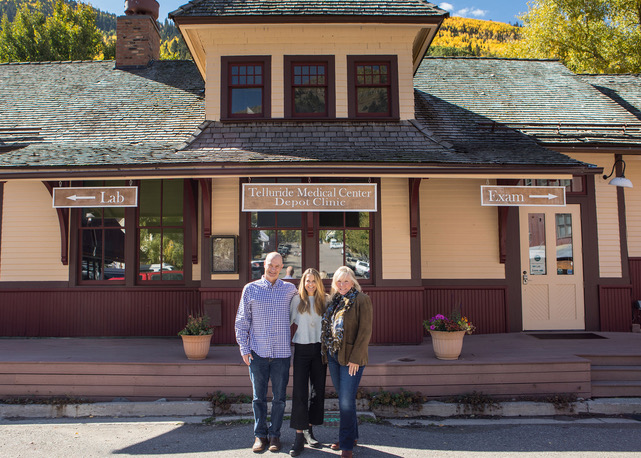
16 Jun Telluride Science Town Talk: “Tiny Gatekeepers of the Nano Universe,” 6/21!
The third Telluride Science Town Talk of the summer takes place at the Telluride Transfer Warehouse in Telluride on Tuesday, June 21, 2022, 6:30pm. Cash bar opens at 6pm. The event is titled “Tiny Gatekeepers of the Nano Universe: How Nuclear Pores in our Cells Separate Friend from Foe.” Hosts Judy Muller and George Lewis once again lead an exciting conversation about the nuclear pore complex and why it matters. Featured scientists are Cees Dekker, Michael Rout, and Anton Zilman.
Go here for more on Telluride Science.

Dr. Anton Zilman

Dr. Cees Dekker

Dr. Michael Rout
Cells are the smallest unit of all living organisms. Many of us can loosely recall the different organelles that make up our cells: mitochondria, nucleus, DNA, and maybe even the cytoplasm. What 8th-grade science has not taught us is how these cells determine what is allowed to enter and exit the nucleus, and what this means for us. The human body contains more than 35 trillion cells, and each cell possesses around 1,000 nuclear pore complexes. Understanding the nuclear pores’ purpose and function is groundbreaking.
After studying this mechanism with an electron microscope, researchers have concluded the importance of these nuclear pores. Just as we watch what enters (and exits) our bodies, our cells concern themselves with the same task. The nuclear pore complex regulates the travel of ions, small molecules, and macromolecules. This cellular traffic determines gene expression, how cells react to a change in environment, and has been linked to the creation of cancer and diseases.
Dr. Michael Rout, Professor of Biochemistry and Biophysics at Rockefeller University, is heavily involved in researching how viruses and cancers change the behavior and structure of cells.
Rout and his colleagues have successfully created 3D maps of the nuclear pores, helping us visualize and understand what this cellular traffic creates, what happens when the passageway malfunctions, and how this impacts our health. With the transport system involving itself with DNA, Rout examines “how defects in these processes lead to many developmental, viral or oncogenic diseases.” His research aims to search how we can correct defects in this mechanism, and combat the development of cancer and viral growth within cells.
New technologies and collaboration between researchers of different fields have transformed how we understand cells and their relation to our bodies. Dr. Anton Zilman discusses how the Nuclear Pore Complex is essentially a “nano-machine.” The nano-pore regulates the traffic while also concentrating different molecules inside the nucleus to facilitate various chemical reactions and molecular processes. Zilman compares the nuclear pore complex to a water purifier or refrigerator, being especially intrigued with its machine-like qualities.
Dr. Cees Dekker, a Professor of Molecular Biophysics at Delft University of Technology and director of the Kavli Institute of Nanoscience Delft, seems most interested in how this mechanism relates to the general understanding of life:
“I am most interested in asking ‘What is life? How does the cell operate? And, what do these functions mean for everything?’”
Dekker intersects biology and physics to examine the mechanics of these cellular bodyguards. Being particularly interested in DNA’s relationship with the nano-pores, he investigates DNA, RNA, and protein travel through the construction of synthetic cells. Dekker’s research aims to uncover how these bio-molecular machines and cellular systems perform their functions.
The three scientists note that we are still making substantial new discoveries in cellular science. Along with fundamental knowledge base advancements, nuclear pore complex research has recently spurred new developments in anti-cancer drugs, such as the drug XPOVIO (Selinexor) which has “the potential to stop cancer cell growth, inhibit viral growth in our cells, or even offset aspects of damage during cellular aging.”
Perhaps the secrets found within nuclear pores will shed light on how we perceive and treat disease, cancer included, and increase our understanding of our body’s own nano-world.
This week’s Telluride Science workshop on Nuclear Pore Complexes and Smart Polymers brings 20 scientists from 11 different countries to share their most recent findings and developments. The knowledge exchange and transfer between these experts will promote further understanding about nuclear pores and ultimately the basis for human life.
The Telluride Science Town Talk on Tuesday, June 21st offers the Telluride community an opportunity to learn about how nuclear pores work and why their gatekeeping functions are so important.


Sorry, the comment form is closed at this time.